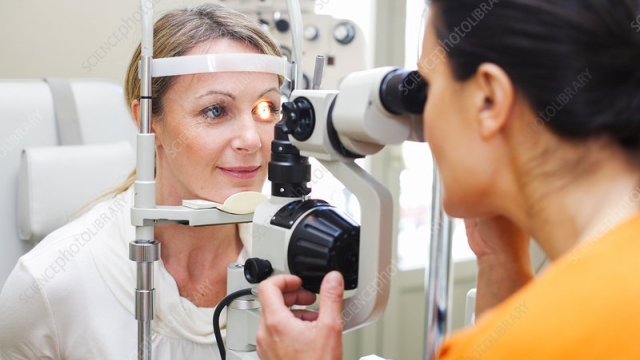
Clearing the Fog: Understanding Retinopathy
Retinopathy, a condition that affects the retina, is a significant concern in the field of ophthalmology. It is often associated with other eye-related complications, such as diabetic eye screening and glaucoma. Characterized by damage to the blood vessels in the retina, retinopathy can lead to vision impairment or even blindness if left untreated. Understanding the causes, symptoms, and potential treatments for retinopathy is crucial for individuals seeking proper care and, ultimately, clearer vision.
Diabetic eye screening plays a vital role in the early detection and management of retinopathy. As diabetes is a common underlying cause of this condition, regular screenings can help identify any signs of retinal damage, allowing for timely intervention. By closely monitoring the health of the retina, potential complications can be addressed early on, significantly reducing the risk of severe vision problems in the future.
In addition to diabetes, another condition commonly associated with retinopathy is glaucoma. Both glaucoma and retinopathy can have a profound impact on vision if not managed properly. While glaucoma primarily affects the optic nerve, retinopathy can exacerbate the damage caused by increased pressure in the eye. Recognizing the potential interconnectedness of these conditions is crucial in developing comprehensive treatment plans to minimize their impact on visual health.
In the following sections, we will delve deeper into the intricacies of retinopathy, examining its causes, progression, and available treatment options. By shedding light on this often misunderstood condition, we hope to provide helpful insights and empower individuals to take charge of their ocular well-being. Let us embark on this journey of understanding, dispelling the fog surrounding retinopathy, and embracing clarity to better navigate the path to healthy vision.
Ophthalmology: An Overview
Ophthalmology is a medical specialty that focuses on the health of our eyes. It is a branch of medicine that deals with the prevention, diagnosis, and treatment of eye disorders and diseases. Ophthalmologists are the specialized doctors who have expertise in this field and are dedicated to preserving our precious gift of sight.
One significant aspect of ophthalmology is diabetic eye screening. Diabetic eye screening involves the examination of the eyes of individuals with diabetes to detect any signs of retinopathy, a common eye disease associated with diabetes. This screening process is essential as early detection of retinopathy can lead to timely intervention and effective management to prevent vision loss.
Retinopathy, a leading cause of blindness worldwide, is another key focus of ophthalmologists. It is a condition that affects the retina, the innermost layer of the eye responsible for converting light into signals that our brain can interpret as images. Different types of retinopathy exist, including diabetic retinopathy, hypertensive retinopathy, and retinopathy of prematurity. Each type requires specific treatments and management approaches to ensure the best possible outcomes for patients.
Ophthalmologists also play a vital role in the diagnosis and treatment of glaucoma, a group of eye disorders characterized by increased pressure within the eye, leading to optic nerve damage and potential vision loss. Glaucoma screenings and regular eye examinations can help in detecting the disease early, allowing for timely intervention and appropriate management.
In conclusion, ophthalmology is a specialized field of medicine that focuses on the health of our eyes. With the ability to detect and manage eye disorders such as retinopathy and glaucoma, ophthalmologists play a crucial role in preserving and protecting our vision. Regular eye check-ups and screenings are integral to maintaining optimal eye health and preventing potential vision loss.
Diabetic Eye Screening: Importance and Process
Diabetic eye screening plays a crucial role in identifying and preventing the onset of retinopathy, a common eye condition associated with diabetes. This screening process enables early detection and intervention, which is essential for preserving vision and preventing further complications.
To begin the screening, individuals with diabetes are invited for a comprehensive eye examination conducted by an ophthalmologist. The eye examination includes various tests such as visual acuity assessment, intraocular pressure measurement, and evaluation of the retina using specialized instruments. These tests aim to detect any signs of retinopathy or other related conditions like glaucoma.
The importance of diabetic eye screening cannot be overstated. Regular screenings help identify retinopathy at its early stages when the symptoms may not be apparent. Early intervention allows healthcare professionals to provide timely treatment and implement strategies to manage diabetes effectively. By doing so, the risk of vision loss and severe complications associated with retinopathy can be significantly reduced.

Understanding Retinopathy and its Relationship to Glaucoma
Emergency eye care
Retinopathy and glaucoma are two distinct conditions that affect the eyes, yet they can be interrelated in certain cases. Retinopathy is a term used to describe damage to the retina, which is the light-sensitive tissue lining the back of the eye. On the other hand, glaucoma refers to a group of eye conditions characterized by damage to the optic nerve, usually caused by increased pressure within the eye.
Although retinopathy and glaucoma are separate entities, they can sometimes coexist in individuals. This means that someone with retinopathy may also experience glaucoma, or vice versa. The exact nature of the relationship between the two conditions is still being studied, but there are a few theories that can help shed light on their connection.
One possibility is that the structural changes occurring in the eye due to retinopathy can contribute to the development of glaucoma. For example, if the blood vessels in the retina become blocked or damaged, this can disrupt the normal flow of fluids within the eye and lead to increased pressure. This elevated intraocular pressure can then induce optic nerve damage, resulting in glaucoma.
Additionally, it is important to note that both retinopathy and glaucoma often share common risk factors, such as diabetes and high blood pressure. These underlying health conditions can potentially contribute to the development of both retinopathy and glaucoma. Therefore, individuals with these risk factors should be particularly vigilant in monitoring their eye health and undergo regular ophthalmological examinations.
In conclusion, while retinopathy and glaucoma are distinct eye conditions, they can be linked in certain cases. The structural changes caused by retinopathy and shared risk factors between the two conditions can contribute to the development or exacerbation of glaucoma. Understanding this relationship is crucial for timely diagnosis and effective management of these eye conditions.



